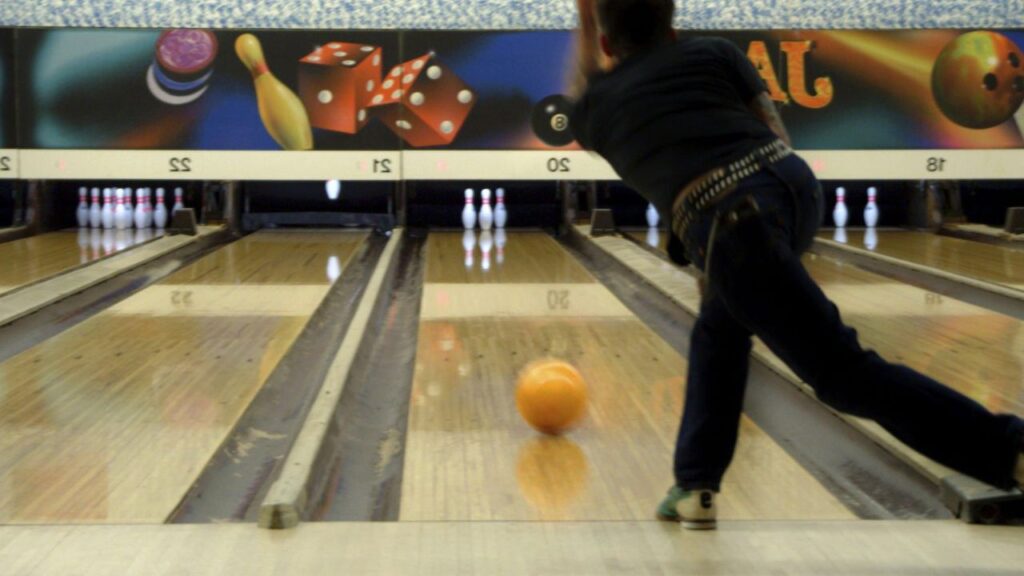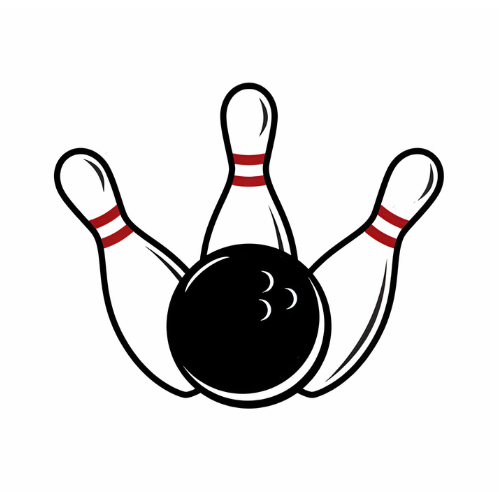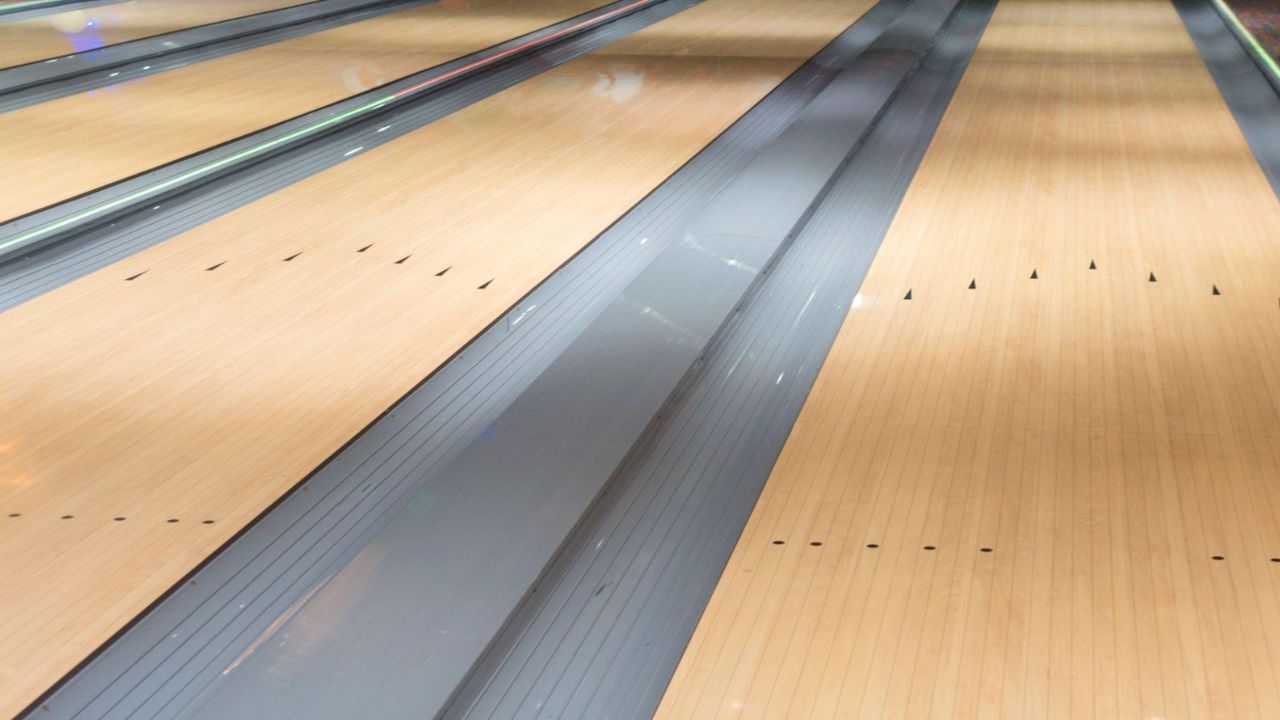Bowling lanes are not flat. Bowling lanes are slightly curved or have a slope to them for proper drainage and increase the difficulty of the game. Bowling has been a popular recreational activity for decades. Whether you are a seasoned pro or a beginner, you have likely heard the term “strike” used to describe a perfect shot.
Bowling may seem like a simple game; however, there are many complexities to it. For instance, there’s the consideration that the lanes may not be flat. Astounded? Bowling lanes have a subtle curve or slope from the foul line to the pins. This angling helps to ensure proper drainage and balances the scoring potential for all bowlers.
It also raises the level of difficulty of the game, as you must adjust your throw accordingly to eradicate the pins. Read on to learn more about the science behind the curved bowling lanes.
History And Evolution Of Bowling Lanes

Bowling lanes have undergone a significant evolution throughout history. Originally, lanes were made of wood, with many different styles of wood being used depending on the location. Today, synthetic lanes have become more popular as they are more durable, easier to maintain, and offer a more consistent playing surface.
Unlike old wooden lanes which required periodic resurfacing to maintain flatness, modern-day synthetic lanes are often made perfectly flat during the manufacturing process. This has led to more consistent play, with bowlers no longer needing to worry about differences between lanes.
The evolution of bowling lanes has been a fascinating one, with the sport continuing to evolve alongside technology and innovation.
The Science Behind The Flatness Of Bowling Lanes
Bowling lanes may appear to be perfectly flat to the naked eye, but there’s a lot more to their design and construction than meets the eye. Physics plays a crucial role in ensuring that bowling lanes are perfectly flat, with minimal variations in slope or incline.
Factors such as temperature and humidity can impact the flatness of a lane, which is why modern-day high-tech tools and equipment are used to ensure that synthetic lanes are perfectly flat and uniform. By using sophisticated measuring tools and techniques, engineers can identify any deviations in lane flatness and correct them before they become a problem.
So the next time you hit the bowling alley, you can do it with the confidence that the lanes are perfectly flat, thanks to the power of physics and technology.
Debunking The Myth Of Bowling Lane Flatness
Bowling lanes are not completely flat as many believe. There are subtle surface variations that can affect gameplay. These variations can be caused by a number of factors, including the age of the lane, the material used to construct it, and the way it was installed.
For example, older lanes may have developed small bumps or dips, while newer lanes may be more consistent in their surface. Additionally, lanes can be affected by environmental factors such as humidity and temperature. It’s important for bowlers to be aware of these variations and adjust their play accordingly to achieve the best results.
While the myth of bowling lane flatness persists, understanding the reality of the situation can help players improve their game.
The Role Of Bowling Lane Maintenance
Bowling lanes are not flat, and regular maintenance is crucial for consistent and fair gameplay. Bowling alley staff play a significant role in detecting and repairing any surface variations to ensure accuracy and prevent injury. Lanes can become uneven over time due to wear and tear or changes in the environment.
Without proper upkeep, games can be affected by skews or other imbalances. At the same time, taking care of the lanes can help reduce the chance of injuries due to slips or falls. Bowling lanes must be treated and maintained regularly to keep them in good condition, so players can enjoy a fair and consistent game.
FAQs
Are Bowling Lanes Completely Flat?
No, bowling lanes are not completely flat. They have a subtle curve called “the crown” to help guide the ball back toward the center, and also a slight slope from the foul line to the pins.
Can The Slope Of The Bowling Lane Affect The Game?
Yes, the slope of the bowling lane can affect the game as it can impact the speed of the ball and the angle at which it hits the pins. Bowlers need to adjust their throws accordingly to accommodate for the slope.
What Is The Crown On A Bowling Lane?
The crown on a bowling lane is a slight upward curve in the center of the lane. It helps guide the ball back toward the center of the lane, preventing gutter balls. The height of the crown is regulated by the sport’s governing bodies.
How Is The Slope Of A Bowling Lane Measured?
The slope of a bowling lane is measured using a tool called a “level. ” It measures the angle of the lane’s slope from the foul line to the pins. The maximum allowed slope in professional bowling is 1:100, meaning a drop of 1 inch for every 100 inches of lane length.
Why Do Bowling Lanes Have A Pattern On Them?
Bowling lanes have an oil pattern on them to help the ball slide smoothly down the lane. The pattern deliberately creates dry and oily parts of the lane to affect the ball’s path and friction. The specific oil pattern used can impact the game and give some bowlers an advantage.
Conclusion
Now that we have answered the question, “Are bowling lanes flat? ” It is evident that they are not entirely flat. A bowling lane’s surface is designed with an arc in the center, giving it a slight curvature or slope towards the gutters to aid in proper ball motion and return.
However, this does not mean that the surface is haphazardly designed. The lane’s flatness may vary on different locations or over time due to wear and tear, but it remains within the standard specifications set by the united states bowling congress.
It is essential to know these intricacies of bowling lanes as they play a vital role in the game’s outcome. Having a good understanding of the bowling lane’s structure can give players an edge in the game. So, the next time you go bowling, observe the lane’s surface, and you will see that it is not entirely flat.

